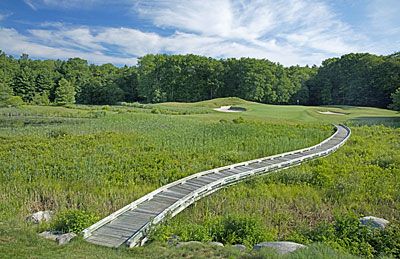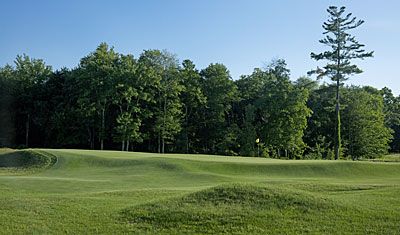- News
- Four holes to watch at TPC Boston - 2017 FedEx Cup Playoffs
Four holes to watch at TPC Boston - 2017 FedEx Cup Playoffs

2017 FedEx Cup Playoffs / Dell Technologies Championship
Four holes to watch at TPC Boston
by M. James Ward
After an epic battle between Dustin Johnson and Jordan Spieth in last week's Northern Trust event – the second phase of this year's FedEx Cup Playoffs heads to New England at TPC Boston for the Dell Technologies Championship. This is the first year of a new sponsor and the annual venue has clearly benefited from the host of improvements made over the last few years. Four holes bear watching as players are seeking to be among the 70 eligible to play in the 3rd leg at the BMW Championship at Conway Farms in Lake Forest, IL in two weeks.
TPC Boston started as an Arnold Palmer design when it opened in 2003 and the overall layout seemed out of character with the native landscape. Gil Hanse, a relatively unknown architect located just outside of Philadelphia was hired in 2005 to improve upon the overall presentation and flow of the course. Hanse had been praised for his work in designing Boston Golf Club and he teamed with former PGA TOUR player Brad Faxon. The work at TPC Boston was to get the course in harmony with the New England landscape – more rugged, more natural and still with a fun appeal for all handicap levels.
Since becoming a part of the FedEx Cup Playoffs, TPC Boston has been the lone constant course in the rotation. While it's likely not as well known as such TOUR stalwarts as Pebble Beach and Riviera – TPC Boston has provided a number of memorable finishes and the 2017 event looks likely to continue that storyline The course has been lengthened just a tad to 7,261 yards with a 77.2 course rating and 154 slope.
The four holes mentioned could very well impact the outcome of this year's event.
7th / 600 yards / Par-5

It pays to land in the fairway – avoiding two pesky fairway bunkers guarding the left side. Generally, the hole plays with the prevailing wind behind the players and a number of them will opt after finding the fairway to get as near as possible to the green in two shots. Blocking the two halves of the fairway is a massive bunker – reminiscent of Pine Valley's hell's half acre. Players will likely fly the bunker if the tee shot is in the fairway. For those not so fortunate – laying back will mean a much longer approach into the green.
The putting surface is set on a diagonal and there is a large greenside bunker that can be a chore to escape from if the lie of the ball is anything but good. Eagles are possible here and clearly birdies will be made by the bunch too. However, for those who drop their guard the 7th may not surrender so quickly or easily.
8th / 213 Yards / Par-3

Following the 7th is a par-3 vastly underrated at TPC Boston. The 8th appears to provide an open target but the key is being able to avoid a menacing bunker on the left side. There's also a much smaller bunker on the right side that gets plenty of action too. Those unable to select the appropriate club will have a chore in escaping with par should they find either bunker. The green has sufficient contour but balls landing without sufficient spin can run-off.
12th / 510 Yards / Par-4

There's already been moaning from a number of players with the "new" 12th. The tee box has been extended nearly 50 yards and the drive zone is now a challenge with a center-placed bunker complex – roughly 305 yards from the tee. In years past, the 12th had no bunkers – now there are several to avoid. In years past – it was simply a questions of how hard a player hit the ball off the tee and then chase after it. That's no longer the case. Players have to decide at the tee what pathway works best for them. The green is not overly contoured but has sufficient subtle breaks which will keep players on their toes.
18th / 530 Yards / Par-5
No event at TPC Boston is ever over until the 18th is finished by all competitors. In years past the green was quite large and getting the ball to the target in two strokes was not very difficult. That's changed noticeably. The strategies commence the minute players walk onto the tee. Some will opt for the safer left side but that can mean an approach in the range of 240+ yards. Those deciding to favor the right side have to avoid center-placed bunkers and another beyond that on the right side. The strongest of players can reap a major dividend if able to fly the ball over the trouble and have less than 200 yards for their approaches.

The putting surface is 30% less in overall size than in years past. There's a wide range of internal movements and the certainty of no more than a two-putt outcome is no longer guaranteed. There's wetland to the right of the green which can play a factor should players fail to pay heed. Any outcome from eagle to double-bogey or more is a distinct possibility. Simple advice – don't walk away from your television set until the final putt is holed.
Images courtesy of Chip Henderson / PGA TOUR